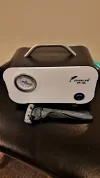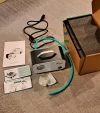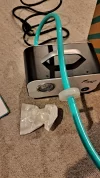Plate Smacker
Member
I've seen some threads about using this pump.
Is there a setup to control vacuum?
What is max vacuum in inHg?
Anybody setup for bottle top filter care to share how they use it and their setup?
Is this pump too strong?
Is it as loud as a freight train?
Can it pump for 3 hours straight or will it explode?
Filtering Testosterone Decanoate and Nandrolone Decanoate. They flow a little slower than Enanthate and not trying to sit down with a hand vacuum for 3 hours filtering 400mL of each.
Using with bottle top filter and GL45 Glass media bottle. Autofil PP Funnel Assembly, 1000mL 0.2um Foxx Nylon



Is there a setup to control vacuum?
What is max vacuum in inHg?
Anybody setup for bottle top filter care to share how they use it and their setup?
Is this pump too strong?
Is it as loud as a freight train?
Can it pump for 3 hours straight or will it explode?
Filtering Testosterone Decanoate and Nandrolone Decanoate. They flow a little slower than Enanthate and not trying to sit down with a hand vacuum for 3 hours filtering 400mL of each.
Using with bottle top filter and GL45 Glass media bottle. Autofil PP Funnel Assembly, 1000mL 0.2um Foxx Nylon



Last edited:







